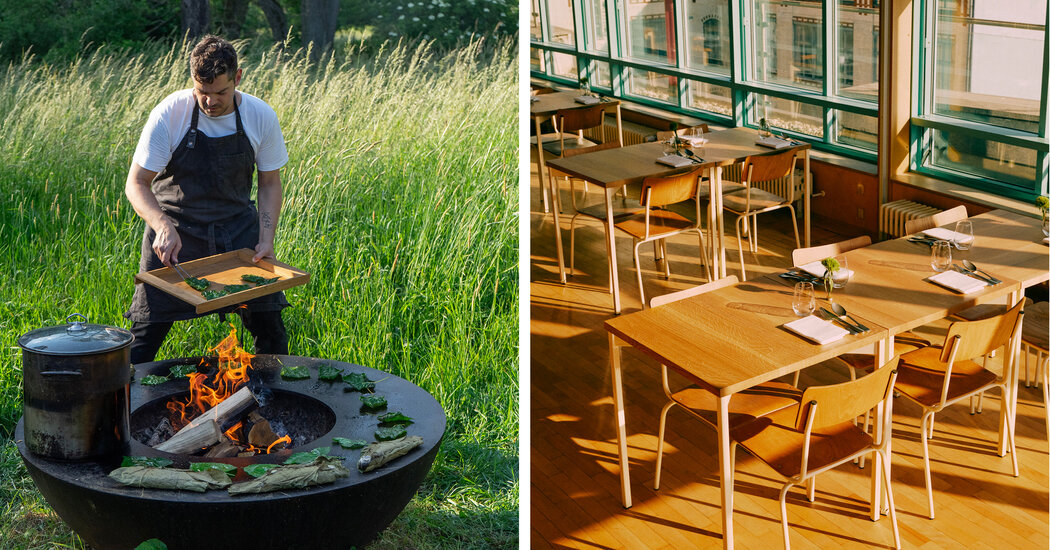Whether in a field or atop a building, more and more Berlin chefs seem to be cooking over open fires. At Kramer Restaurant, in the lively Kreuzkölln neighborhood as of January, an open-fire grill is front and center; those who book the chef’s table can observe cooks expertly singeing steak, fish and seasonal vegetables. The founder, Fabian Kramer, also works with fire to produce the artisanal ceramic vessels that decorate the space. Mischa Amadeus Olma, a founder of Woodcuisine, arranges foraging workshops and dinners outdoors (currently in an herb garden in the leafy Mariendorf neighborhood) where he and friends offer a changing menu — one evening it was fire-grilled trout and a dessert of pancakes served with freshly foraged honeycomb — that is cooked on the sides of a steel fire ring forged by the Swiss sculptor Andreas Reichlin. Jeffrey Claudio (who has cooked at the Singapore restaurant Burnt Ends) and his partner, Jessica Tan, have opened a temporary rooftop yakitori restaurant — a tiny wood house with a dozen seats around a grill. Their permanent restaurant, Stoke, is scheduled to open next year. Ember, which started service in May, is also located on a rooftop, in a room with walls of glass and a terrace where the outdoor kitchen is located. It’s overseen by Tobias Beck, who trained with the Argentine chef Francis Mallmann. He serves up a four-course menu for 68 euros from Thursdays through Saturdays, which might include wood-fired ricotta with fava beans and salted lemon or lamb al asador.
Stay Here
A New Hotel in a 13th-Century Spanish Palace
When José Polo and Toño Pérez opened their restaurant Atrio in Cáceres, a city in Spain’s sparsely populated western Extremadura region, neither one had worked in a restaurant before. But they loved to entertain and dreamed of putting their hometown on the culinary map. Three decades later, Atrio was awarded its third Michelin star last year. Now, the couple have opened an art-filled hotel — their second in Cáceres — within a 13th-century palace across the street from the restaurant. Emilio Tuñón, the winner of Spain’s 2022 National Award for Architecture, and his architectural partner, Carlos Martínez Albornoz, set about modernizing the palace while preserving as many historic details as possible. As part of the restoration, the building’s imposing tower, which was ordered to be lowered in the 15th century by Queen Isabella I, has been rebuilt to its original height. The 11…
Click Here to Read the Full Original Article at NYT > Travel…
